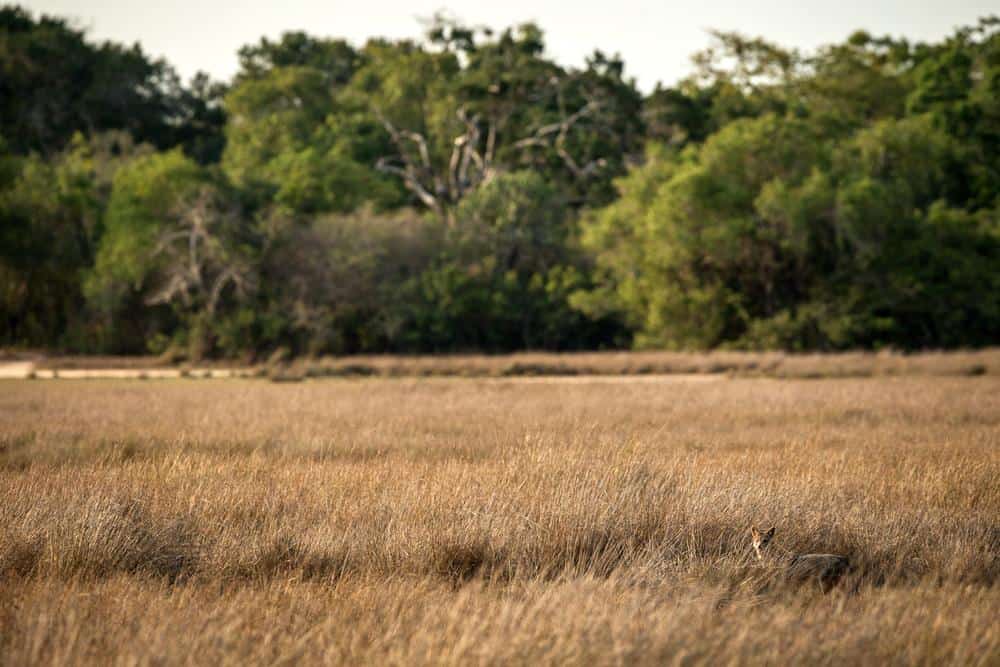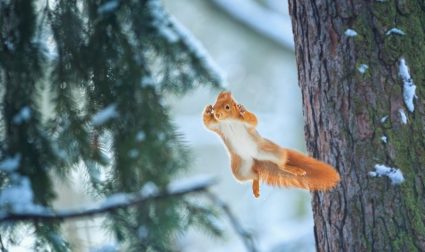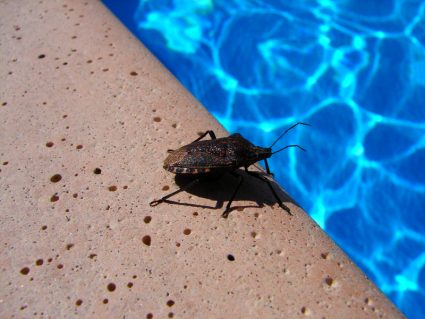
Coyotes, native to North America, are known to adapt to diverse habitats, including urban environments. Their increasing presence in our backyards can be alarming and problematic for homeowners. This comprehensive guide will help you understand the behavior of these creatures, identify their presence, and implement effective strategies to deter them from your yard.
To deal with coyotes in your yard, identify their presence through signs like noises, tracks, and property damage. Deter them by removing food sources, installing physical barriers like tall fences, using repellents, installing motion-sensitive lighting, keeping pets safe, making loud noises, and maintaining your yard. Remember, each situation is unique, so adapt your strategies as needed.
Signs of Coyotes in Your Yard
Before we delve into the solutions, let’s first identify the signs of a coyote’s presence in your yard. Here are some common indicators:
- Noises: Coyotes emit a range of sounds, including howls, barks, and whines, particularly at night.
- Scat: Coyote feces, filled with hair and bones, are a telltale sign of their presence.
- Tracks: Coyote tracks are similar to dog tracks but have a more oval shape, sharp pointed claws, and a straighter walking pattern.
- Tufts of fur: Fur left in fences or bushes can indicate coyote presence.
- Damage to property: Damage to irrigation lines, gardens, or property can suggest coyotes searching for food or marking territory.
- Missing or injured pets/livestock: Coyotes may prey on small animals, including pets and livestock.
- Rustling in bushes: Rustling noises can be a sign of a coyote’s presence.
Deterrents and Solutions
Once you’ve identified a coyote’s presence, you can implement the following solutions to deter them:
Remove Food Sources
Coyotes are attracted to easy food sources. Keep garbage in tightly sealed containers, store them in a garage or shed, remove pet food, fallen fruit, and spilled seed beneath bird feeders from your yard.
Install Physical Barriers
Fences or walls that are at least 7 feet tall can prevent coyotes from jumping over. Coyotes can also dig under fences, so consider installing a fence that extends at least a foot underground.
Use Repellents
Place stinky scents like wolf urine, ammonia-soaked rags, and mothballs around your yard. A spray mixture of white vinegar and water can also create an invisible barrier.
Install Motion-Sensitive Lighting
Yard lights or motion detectors can frighten coyotes away.
Keep Pets Safe
Keep pets in fenced areas or covered kennels and always supervise them while outdoors. Walk your dog on a leash and never leave small pets outside unattended.
Make Loud Noises
If you encounter a coyote, make loud noises and make yourself look big to scare them away.
Maintain Your Yard
Remove brush and tall grass from around your property to reduce protective cover for coyotes.
Myths about Coyotes
Misconceptions about coyotes can exacerbate fear and misunderstanding. Here are some common myths debunked:
- Coyotes are aggressive towards humans: Coyotes are generally shy creatures that avoid humans. Most incidents involving coyotes are linked to human feeding.
- Coyotes are only active at night: While coyotes are naturally nocturnal, they can adapt to human schedules and may be seen during the day.
- Coyotes are an invasive species: Coyotes are native to North America and have naturally expanded their range in response to changing conditions.
Final Thoughts
Coexisting with coyotes is possible with the right knowledge and strategies. By following the tips provided, homeowners can minimize the likelihood of coyote encounters and ensure a safe environment for their families and pets.
Remember, each situation is unique, and what works for one yard may not work for another. It’s essential to stay informed, remain vigilant, and adapt strategies as needed.
Frequently Asked Questions
What should I do if a coyote approaches me?
If a coyote approaches you, make yourself look larger and maintain eye contact. Do not turn your back or run, as this can trigger a coyote’s predator instinct. Instead, back away slowly while making loud noises to scare the coyote away.
Can coyotes climb trees?
No, coyotes cannot climb trees. They are primarily ground-dwelling animals.
What do coyotes eat?
Coyotes are omnivorous, meaning they eat both meat and plant material. They primarily feed on small mammals, fruits, vegetables, and carrion.
Are coyotes dangerous to humans?
Coyotes are generally not dangerous to humans and tend to avoid human interaction. However, they can become a threat if they are fed by humans and lose their fear, or if they are cornered or protecting their young.
Can coyotes be tamed or kept as pets?
Coyotes are wild animals and should not be kept as pets. They have specific needs and behaviors that make them unsuitable for domestication.
How fast can a coyote run?
Coyotes can run at speeds of up to 40 miles per hour when chasing prey or fleeing from danger.
What is the lifespan of a coyote?
In the wild, coyotes typically live between 6 to 8 years. However, in captivity, they can live up to 14 years.









